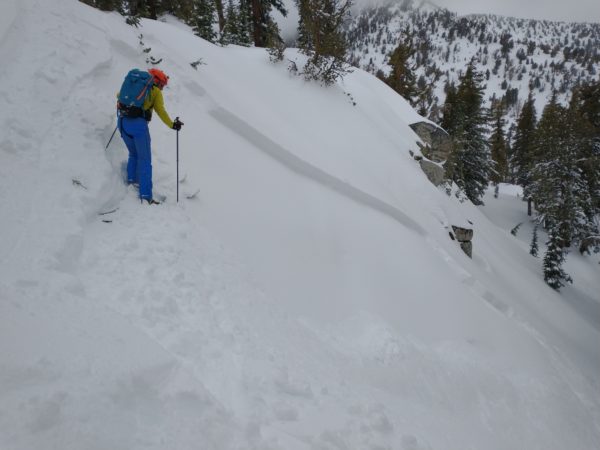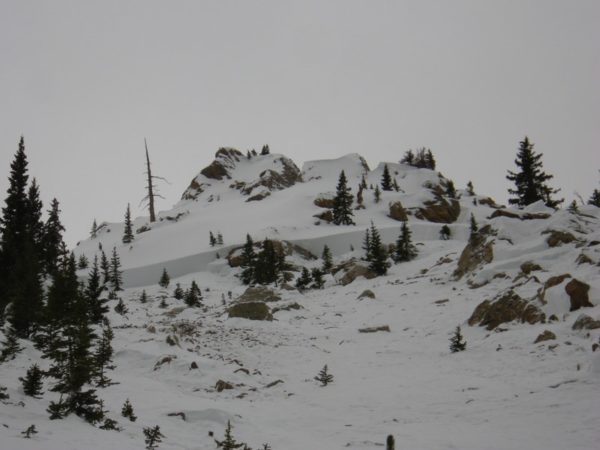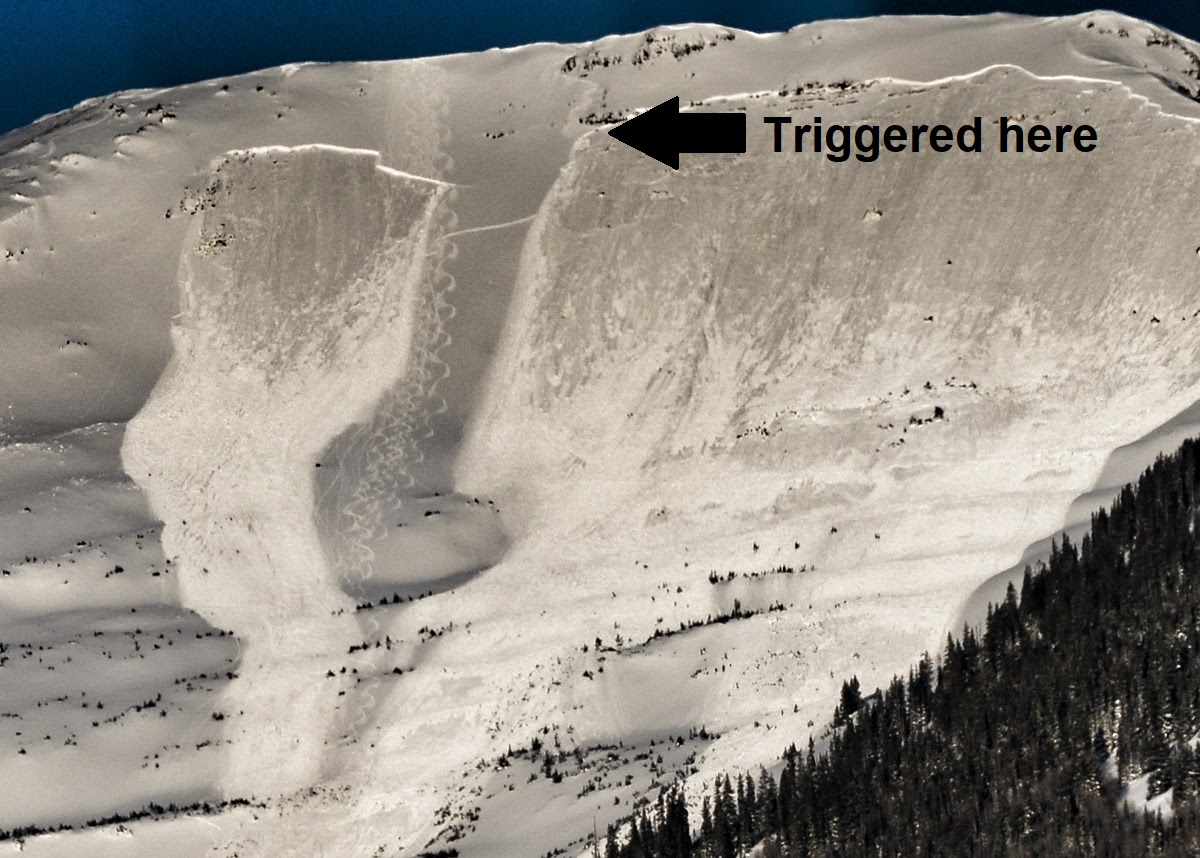The location where a trigger, such as a skier or rider, initiates an avalanche.
In some cases, the avalanche problem only exists and can only be triggered on a specific and often predictable part of a slope, such as a windloaded feature or a steeper pitch. Under some conditions, a slope-wide slab avalanche can be easily triggered from anywhere on the slope. However, sometimes dozens of people can travel across a slope before one unlucky person hits the trigger point that wipes out everyone’s tracks. Not all trigger points are obvious or intuitive, but understanding common trigger points can help you choose routes that reduce your risk. These include: 1) Specific features on the slope, such as leeward terrain or a steeper pitch, where a known problem exists 2) abrupt slope angle changes, where riders may have a greater influence on failure initiation or avalanche release, 2) shallow areas where a thick overlying slab is softer or thinner, such as near rock outcrops or near the margins of a slab where it changes in thickness, 3) somewhere that the buried weak layer is especially weak. For depth hoar layers, this can be near rocky areas or buried vegetation.

This thick, hard slab avalanche was triggered from its margin, where the slab was thinner and the weak layer was easier to impact. Credit: Colorado Avalanche Information Center

With shallow soft slabs or loose avalanches, avalanches are often triggered from fairly predictable locations such as steeper pitches or leeward features. Credit: Sierra Avalanche Center

The slope has numerous areas where the buried weak layer is potentially weaker or closer to the snow surface. Many of these trigger points were hidden before the avalanche released. Credit: Colorado Avalanche Information Center
An example of a trigger point that was not obvious or intuitive.
